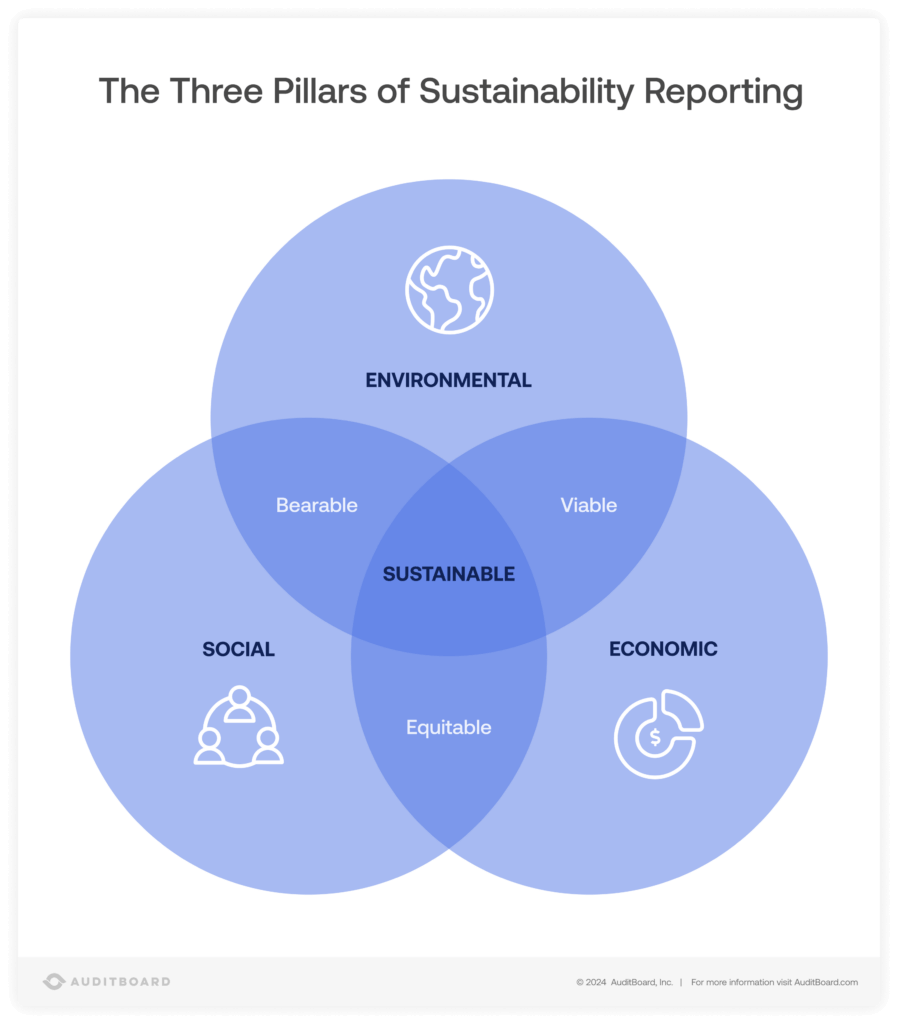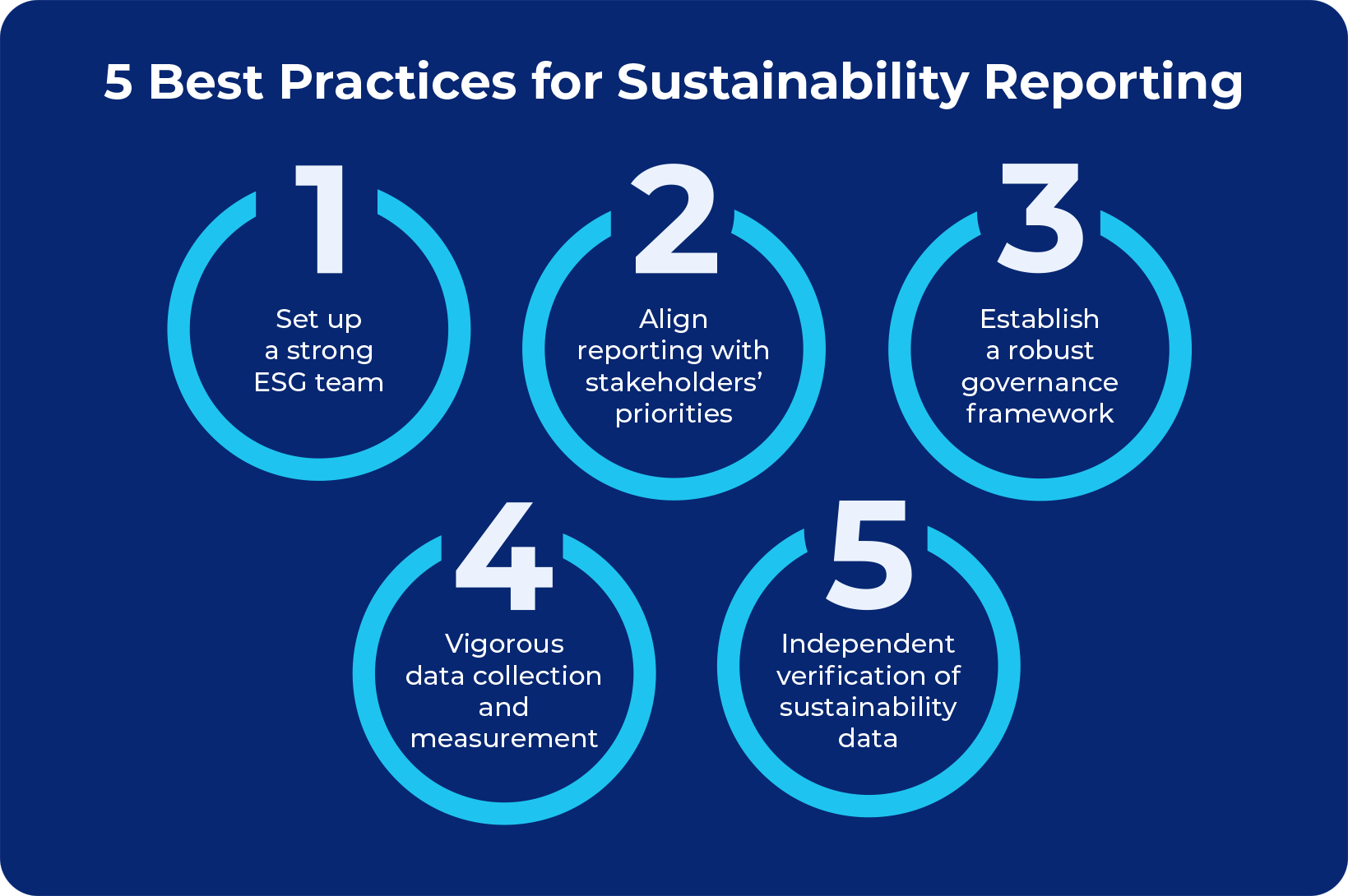In today’s world, businesses face increasing pressure to demonstrate their commitment to sustainability. More and more, stakeholders want to understand a company’s impact on the environment and society. This demand has led to the rise of sustainability reporting, a practice that helps organizations transparently communicate their environmental social governance reporting (ESG) performance. This comprehensive guide will break down the essentials of sustainability reporting for beginners, starting with the ESG importance and explaining how it shapes reporting frameworks. Furthermore, we’ll explore how to choose the right sustainability reporting framework, delve into the world of ESG reporting software, and finally, guide you through the process of getting started with your own sustainability report.
What is Sustainability Reporting?
Defining Sustainability Reporting and its Purpose
A sustainability report is a formal document published by a company to communicate its environmental, social and governance (ESG) performance. It’s a way for organizations to showcase their commitment to esg importance and responsible business practices. More than just a regulatory requirement, it’s a valuable tool for engaging stakeholders, attracting investors, and enhancing brand reputation. The core purpose of sustainability reporting is to provide transparent insights into a company’s impact on the world, detailing both positive contributions and areas needing improvement. This transparency fosters trust and accountability, driving continuous improvement and ultimately contributing to a more sustainable future.
The Importance of Transparency and Accountability in Sustainability Reporting
Transparency and accountability are fundamental pillars of effective environmental social governance reporting. Openly sharing ESG data, methodologies, and performance indicators enables stakeholders to assess a company’s true commitment to sustainability. This scrutiny encourages responsible behavior and discourages greenwashing. Accountability, established through target setting, performance tracking, and independent assurance, demonstrates a genuine drive for progress.
| Feature | Benefit |
|---|---|
| Transparency | Builds trust with stakeholders, attracts responsible investments. |
| Accountability | Drives continuous improvement and promotes genuine progress. |
| Use of ESG Reporting Software | Streamlines data collection and reporting processes. |
| Adoption of a Sustainability Reporting Framework | Ensures standardized and comparable reporting. |
Furthermore, clear communication of ESG-related risks and opportunities reveals how these factors are integrated into a company’s overall business strategy. By adopting a sustainability reporting framework, such as GRI or SASB, organizations enhance the credibility and comparability of their environmental social governance reporting, furthering their journey toward sustainable growth.

Understanding ESG (Environmental, Social, and Governance)
ESG stands for Environmental, Social, and Governance, representing the three key factors used to evaluate an organization’s or investment’s sustainability and ethical impact. ESG importance is growing rapidly as stakeholders seek greater transparency into how companies operate and contribute to a more sustainable world.
The Three Pillars of ESG
ESG factors provide a holistic view of a company’s performance beyond traditional financial metrics. Here’s what each pillar entails:
| ESG Pillar | Description | Examples |
|---|---|---|
| Environmental | Focuses on a company’s impact on the natural world. | Greenhouse gas emissions, resource depletion, waste management, pollution, deforestation, biodiversity |
| Social | Addresses a company’s relationships with its employees, customers, suppliers, and the broader community. | Labor standards, human rights, diversity and inclusion, product safety, community engagement |
| Governance | Reflects a company’s internal practices and leadership structure. | Board diversity, executive compensation, ethics, transparency, anti-corruption measures |
How ESG Relates to Sustainability Reporting
Environmental social governance reporting plays a crucial role in conveying a company’s ESG performance. It provides a structured way for organizations to disclose their ESG-related impacts, risks, and opportunities to stakeholders. By clearly articulating ESG strategies and progress, businesses demonstrate their commitment to responsible practices and their alignment with broader sustainability reporting framework.
“ESG reporting isn’t just about checking boxes; it’s about telling your sustainability story transparently and authentically.”
Key ESG Metrics and Indicators
The specific metrics used in esg reporting software and environmental social governance reporting varies depending on the industry, reporting framework, and the materiality of specific ESG factors for the business. Common approaches involve quantifying progress towards defined targets using concrete data.
Choosing the Right Sustainability Reporting Framework
For effective environmental social governance reporting, selecting the appropriate sustainability reporting framework is crucial. Several frameworks exist, each with its own focus and approach. Choosing the right one depends on your company’s specific needs and goals. Here are some prominent options:
GRI (Global Reporting Initiative)
GRI is one of the most widely used frameworks globally. It offers a comprehensive set of standards covering various esg importance aspects, including environmental, social, and economic performance. GRI’s modular structure allows for flexibility, enabling companies to tailor their reporting to their specific material topics. This framework is an excellent option for organizations seeking a holistic approach to environmental social governance reporting.
SASB (Sustainability Accounting Standards Board)
SASB standards, now consolidated under the International Sustainability Standards Board (ISSB), focus on financially material ESG factors. SASB standards are industry-specific, providing detailed guidance on the ESG topics most relevant to a company’s financial performance. If your priority is communicating ESG information pertinent to investors, SASB (now ISSB) is a strong choice.
Other Important Frameworks and Standards (e.g., TCFD, IIRC)
Beyond GRI and SASB, several other frameworks offer valuable guidance. The Task Force on Climate-Related Financial Disclosures (TCFD) focuses specifically on climate-related risks and opportunities. The International Integrated Reporting Council (IIRC) promotes integrated thinking and reporting, linking ESG performance to broader business strategy. These frameworks together, along with emerging esg reporting software, provide a suite of options to enhance transparency and address stakeholder concerns. Selecting the right combination can significantly impact your environmental social governance reporting effectiveness.
ESG Reporting Software and Tools
Managing and analyzing environmental social governance reporting data can be complex. Thankfully, esg reporting software exists to streamline the process. These tools help gather, analyze, and report ESG data efficiently, reducing manual effort and ensuring accuracy.
Benefits of Using Dedicated Software
Dedicated software offers many advantages. Firstly, it automates data collection and consolidation, minimizing errors and saving time. Secondly, these tools assess esg importance by offering in-depth analysis and reporting features, helping businesses identify trends, track progress relative to set goals, and present meaningful information. Thirdly, this kind of automation ensures data accuracy and consistency, crucial for credible reporting. Finally, many software tools offer integration with existing systems, allowing for seamless data flow.
Key Features to Look For in ESG Software
Choosing the right software involves considering essential features. Look for data management capabilities to centralize information, automated reporting features for efficiency, and customizable dashboards for insights. Integration capabilities are also key, as is robust data security. Here’s a quick guide:
| Feature | Description |
|---|---|
| Data Management | Centralized platform for collecting and storing ESG data. |
| Automated Reporting | Generate standardized reports automatically. |
| Customizable Dashboards | Tailored views of key metrics. |
| Integration Capabilities | Integration with existing business systems. |
| Data Security | Encryption and access controls to safeguard sensitive data. |
| Sustainability Reporting Framework Alignment | Compliance with frameworks such as GRI and SASB |
Popular ESG Reporting Software Options
Several reputable software options are currently available. These include dedicated ESG platforms, also traditional enterprise performance management solution with expanded ESG features. Researching various providers is recommended before choosing what aligns best. “Consider your specific needs, budget, and data integration requirements to select the correct fit.”

Getting Started with Your Sustainability Report
Starting your first environmental social governance reporting can feel overwhelming. But, by breaking down the process into smaller, manageable steps, you can confidently navigate this crucial aspect of demonstrating your company’s commitment to sustainability.
Steps to Create Your First Report
It’s much easier to create a sustainability report by organizing each step of the process. You don’t have to be afraid of the complexity. Here’s a five-step process to write your report.
| Step | Action | Description |
|---|---|---|
| 1 | Materiality Assessment | First you should identify the esg importance. What matters most to your stakeholders and your business regarding sustainability? |
| 2 | Data Collection | Gather relevant data related to the material topics. Tips for Effective Data Collection and Management will be covered soon. |
| 3 | Report Writing | Develop a compelling narrative describing your company’s ESG performance, targets, and future plans. |
| 4 | Review and Assurance | Ensure the report’s accuracy and credibility before publishing. Independent verification adds more value. |
| 5 | Communicating Your Sustainability Performance | Share the report and engage with stakeholders about your sustainability initiatives. |
Tips for Effective Data Collection and Management
Data lies at the heart of credible esg reporting software. Use these steps when collecting and managing your data.
- Establish Clear Metrics: Define what you will measure to ensure consistency and track progress.
- Centralize Data Storage:ESG reporting software can streamline data collection and ensure easy access.
- Data Validation Processes: Implement checks to maintain data integrity and prevent errors.
Communicating Your Sustainability Performance
Transparent communication strengthens stakeholder trust. Consider these tips for sharing your sustainability report. Create an online version of the report and share it on social media channels. Organize stakeholder meetings and get feedback. By considering the above steps and tips, you can also successfully prepare your first report. By embracing transparency and accountability, you are demonstrating a commitment to a better future.
Frequently Asked Questions
1. What exactly is sustainability reporting?
Sustainability reporting is a way for companies to share their progress on environmental, social, and governance (ESG) goals. It covers the positive and negative impacts of a company’s actions and helps them prioritize sustainability efforts. This includes disclosing ESG goals, risks, and opportunities, and demonstrating compliance with regulations. It’s also a crucial tool for transparency, often using visuals like charts and photos to communicate progress effectively.
2. What should be in a sustainability report?
While there’s no fixed format, a sustainability report typically includes the company’s ESG targets, their progress toward those targets, related financial implications, and how they’re managing ESG risks and opportunities. The report should also demonstrate compliance with relevant regulations, such as those from the EU or UK regarding greenhouse gas emissions. Aligning with established standards like GRI or SASB ensures data completeness and avoids greenwashing.
3. Why is sustainability reporting important?
Sustainability reporting helps businesses understand long-term risks and opportunities related to ESG factors. It also increases transparency, building trust with stakeholders like investors and consumers, thus improving brand image. By addressing potential ESG risks, companies can reduce waste and potentially save on costs while demonstrating alignment with CSR goals. This leads to more informed strategic decision-making and increased compliance with evolving regulations.
4. What are the legal and best practice requirements for these reports?
A company’s sustainability report must comply with any mandatory reporting rules in its region, like the EU’s CSRD or the UK’s greenhouse gas emission disclosure requirements. Beyond legal compliance, reports should align with established standards like GRI and SASB to maintain consistency, completeness, and avoid greenwashing. several frameworks can inform reporting such as the Global Reporting Initiative (GRI), Sustainability Accounting Standards Board (SASB), Task Force on Climate-related Financial Disclosures (TCFD), and Carbon Disclosure Project (CDP).
Sources & References
- What is Sustainability Reporting? Definition, Purpose … https://www.gep.com/knowledge-bank/glossary/what-is-sustainability-reporting






